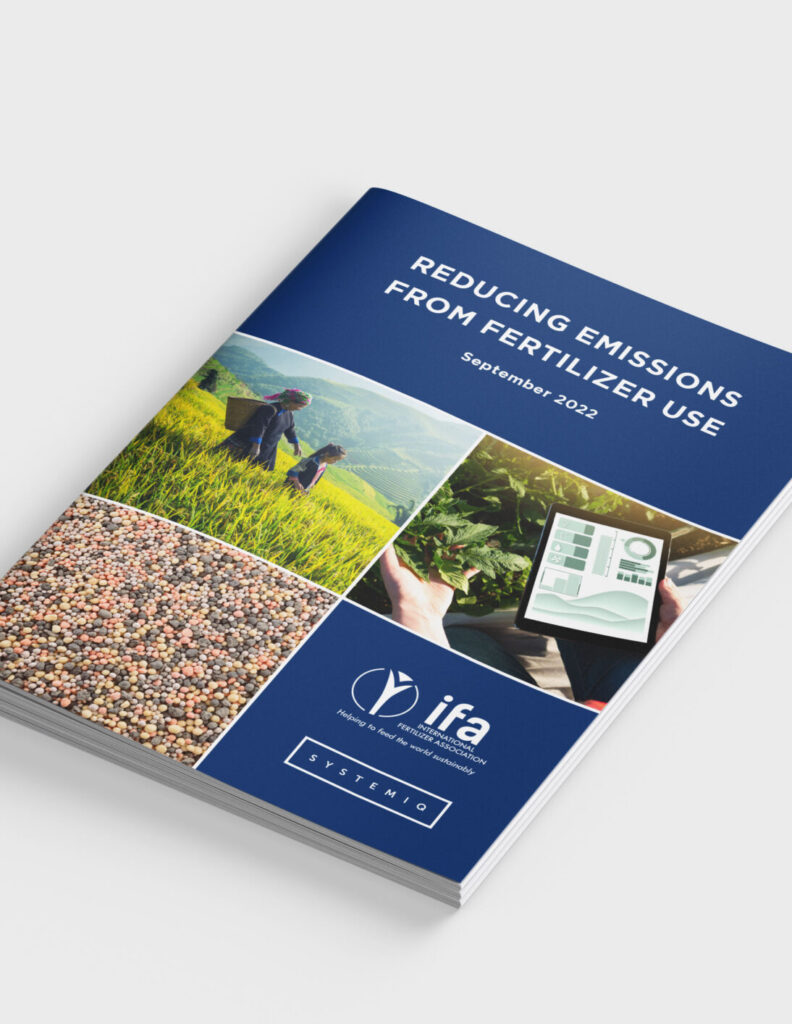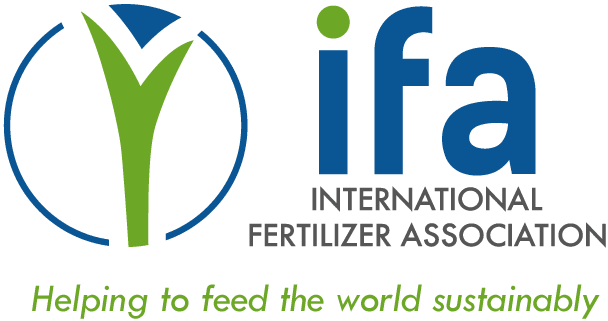Reducing Emissions From Fertilizer Use Report
Amid an evolving food crisis and in line with environmental goals, the fertilizer industry is helping to reduce agriculture’s carbon footprint while contributing to global food security. From the fertilizer factory to the farm, the industry is committed to playing its part in curbing greenhouse gas (GHG) emissions and making food systems more resilient.
Approximately half the food we eat today has been produced thanks to mineral fertilizers. At the same time, its use is associated with GHG emissions equivalent to an estimated 720 million tonnes of carbon dioxide a year. To help guide a long-term sustainability strategy, IFA is working with its members on decarbonization. In 2021, the International Energy Agency’s Ammonia Technology Roadmap showed pathways to lower emissions in fertilizer production (IFA and the European Bank for Reconstruction and Development provided support). The September 2022, Reducing Emissions from Fertilizer Use report highlights actions to scale up in order to cut scope 3 emissions – the indirect emissions that occur in companies’ value chains. The fertilizer industry recognizes that an efficient transition to economy-wide, net-zero emissions is the only way to limit global warming. Around the world, fertilizer companies are already implementing measures to reduce CO2 emissions from their operations and adopt near-zero-emission technologies.
Report
Published by IFA and Systemiq, the Reducing Emissions from Fertilizer Use report outlines how greenhouse gas emissions from global mineral nitrogen fertilizer use can be reduced by 70% by 2050. Significantreductions in the emissions can be achieved by applying existing fertilizer technologies and best management practices. This 85-page report provides recommendations to fertilizer companies, farmers, their advisers and policy makers on how to cut GHG emissions while continuing to support food production. It includes an analysis of six global agricultural regions and the opportunities for emissions reductions in these systems, including cost saving opportunities for farmers.
Reducing Emissions from Fertilizer Use - Executive Summary
The Executive Summary of the Reducing Emissions from Fertilizer Use report features the context and key recommendations for action by the industry and others in the agriculture value chain.
Videos
Learn how fertilizer companies are working with farmers and in partnerships with others in agriculture to move the sector along a lower carbon path, while continuing to support food production for a rapidly growing world population.
View Video
Press Release
Read how greenhouse gas emissions from mineral nitrogen fertilizer use can be reduced by 70% by 2050, according to the IFA and Systemiq September 2022 report, Reducing Emissions from Fertilizer Use.
Read Press Release
FAQ
Frequently Asked Questions about the report.
Read FAQ

